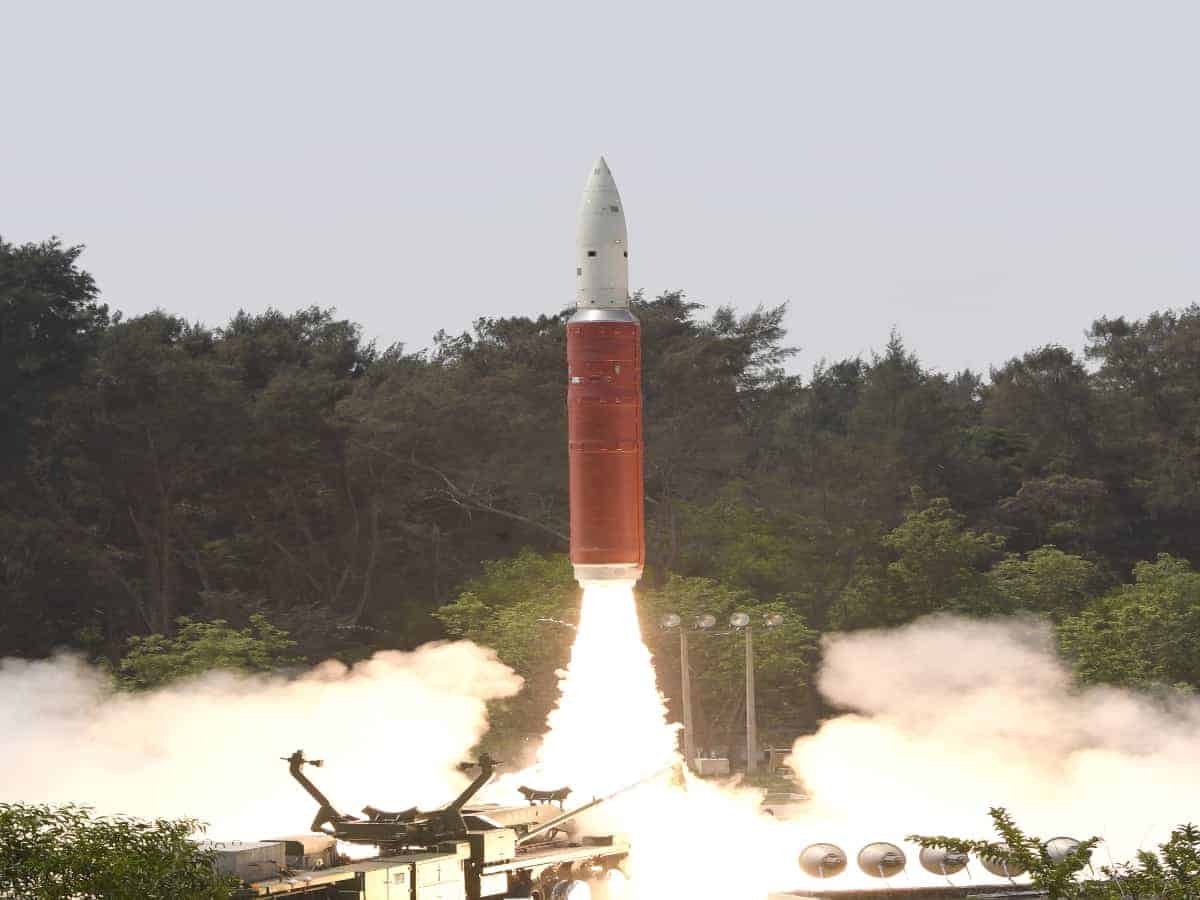
Exactly two years after India surprised the world with the dramatic announcement by Prime Minister, Narendra Modi that it achieved the capability to destroy space satellites, defence scientists claim that the debris created is almost cleared & further technologies developed.
Mission Shakthi on March 27, 2019 had propelled India into the exclusive club of US, Russia and China that had the capability to launch missiles to destroy satellites in low-Earth orbit. India has demonstrated its ability to defend its space assets, the PM had declared.
But, the successful test-launch of the anti-satellite (ASAT) missile and destruction of the target raised both criticism and space environmental concerns globally.
The scientists of the Defence Research and Development Organisation (DRDO) fired the ballistic missile defence interceptor, the Prithvi Delivery Vehicle Mark-II (PDV MK-II) and destroyed the Microsat-R satellite at a low altitude of 300 km in a flight that lasted just over half a minute.
The Microsat was small and launched in January, the same year by the Indian Space Research Organisation (ISRO) using its Polar Satellite Launch Vehicle (PSLV). The intercept occurred on the PDV MK-II’s downward trajectory at a closing velocity of 9.8 km/sec. The entire exercise pointed to a clear strategy to limit the orbital life of the debris created by the ‘hit-to-kill’ intercept.
Space debris & strategic compulsion
As a follow up to the successful test the DRDO has been working on a special research group to develop military capabilities in space. It has upgraded and fabricated advanced sensors and communications technology for satellites too.
According to an ANI report, the Union Government has okayed a Defence Space Agency, which was set up in Bengaluru. Work is also in progress to provide enhanced signal intelligence, communication intelligence and electronic intelligence to boost the overall military capabilities in space.
Though India has consistently maintained that the test was to secure its space assets and a technology demonstrator, both experts and critics point to a strategy of countering China.
In an article in April 2019, Ashley J. Tellis, Senior Fellow at the Carnegie Endowment for International Peace, says, the Chinese ASAT test in 2007 occurred at an altitude of 865 km and produced a debris field of some 3,000 objects that will linger in space for decades. In comparison, the Indian demonstration appears to have produced some 400 fragments (of which about 270 are being tracked) that will decay in weeks or perhaps a few months.
Although there appear to be a few pieces of debris that were propelled into altitudes as high as 1,000 km, most space analysts agreed that the Indian test, however undesirable, did not compare with the Chinese test in terms of the damage done to the space environment.
Space junk is growing fast and posing a serious problem. It can potentially harm satellites being launched or in their orbital path. The damage can be high commercially.
According to the European Space Agency’s statistical model, there are over 130 million pieces of anthropogenic space debris smaller than a millimetre. The only way we can hope to do anything about the problem is by working together.
But how we use space is changing. Satellite swarms, smallsats and “constellations” are becoming more common. SpaceX’s StarLink alone has put hundreds of satellite in low-Earth orbit. So, the ESA says, it’s more important than ever that everyone cooperates to keep our little corner of space as clean as we can.
India’s capability in ASAT is decade-old
India has had the capability to conduct anti-satellite missile tests for at least 10 years, say scientists of the DRDO. Dr V K Saraswat, member NITI Aayog and former Chief of DRDO stated at a media conference that the defence scientists were prepared for such a test, but the earlier Governments had not given its go ahead.
India had already demonstrated the capability by launching missile interception tests where an incoming missile was brought down in exo-atmospheric conditions.
Interestingly, the A-SAT technology can be termed as a by-product of the Ballistic Missile Defence Programme that was being driven from the Research Centre Imarat, Hyderabad.
Anti-satellite weapons are considered critical since they can hit the communications systems which depend on satellites. In turn, it can cripple economic activity by impacting monetary transactions through banks and ATMs too.
Implications & balancing China power
Critics of India’s ASAT demonstration fear that it could embolden many other nations to follow suit. There are several countries which have capability to undertake such tests. If that happens, there will be no stopping in turning space into a highly inhospitable environment for many different kinds of commercial and civilian exploitation’s, they argue.
Ironically, India is a strong commercial player in the low earth orbit, with its PSLV launch vehicles being the most dependent and cost effective launcher. It has tapped the market well too in the past two decades with good commercial gains.
In addition, the ISRO’s satellite programmes over the decades have been driven with the purpose of aiding in accelerating the country’s economic growth and communications.
Most political opponents and some observers have speculated that the ASAT test was determined by Modi’s domestic political imperatives, especially given its timing in an election year. However, the ruling dispensation has been echoing the overall objective as the PM’s mission of strengthening India’s military capabilities in order to prepare for long-term competition with China.
India has good relations with all other space powers and has no reason to target any of their space assets. Only China fits the bill of being India’s adversary while possessing the capability and the intention to threaten India’s space programme. With a hostile neighbour in Pakistan and the good relations that country has with China, make matters worse.
India’s ASAT test also undoubtedly validated several emerging Indian ballistic missile defence technologies, including the imaging infrared sensor in the PDV MK-II’s kill vehicle and its ‘seek and attack’ control system.
On most counts, the Indian ASAT test arguably achieved its political objectives and technology demonstration successfully. But, the larger military and geo-political challenge from China remains formidable.
Somasekhar Mulugu, former Associate Editor & Chief of Bureau of The Hindu BusinessLine, is a well-known political, business and science writer and analyst based in Hyderabad

